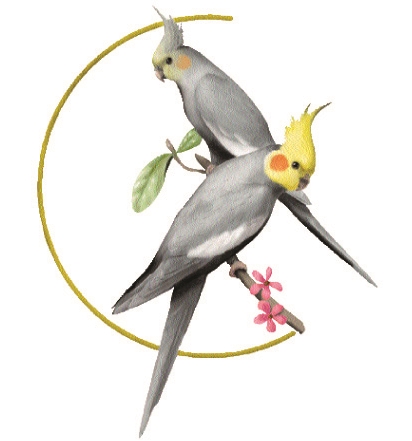The best way that I have found to keep records of my cockatiel babies and their information is by using a notebook. In this notebook, you have Form A and Form B. Form A is the page that you use when you set up each breeding. Each breeding has its own page. I number each breeding as follows: The first breeding of 2015 will be numbered 1-15; the tenth breeding of 2015 is numbered 10-15, and so forth. Refer to this example of Form A.
You will of course, have blank lines at the bottom in which to fill in the chick's band number, color, sex, hatch, and remarks. I ran out of room, so just imagine that there are approximately 10 additional lines at the bottom. (Note from the Online Editor. I may add these to the form within a few days of when it goes online).
The "PAGE NO." at the top is their breeding number, i.e., 1-15 or 10-15, etc. I use the "Expectations" area for their genetic possibilities. If you fill out the pedigree area, you will know at a glance what the lineage of each baby is. Fill out one form for each pair that you set up and don't throw it out if nothing comes of the pairing - you will want to remember who was set up together and what happened.
Form B is the complete record of babies, listed numerically by band number. You will find that entire clutches of babies don't necessarily get listed together. If another baby from a different clutch gets banded in between babies from one clutch, they will not be listed together. It is important to keep the listings numeric by band number otherwise you will have to hunt for a particular baby. On Form B, you list the babies band number, color, sex, hatch date, cock (father), hen (mother), and disposition (what you did with it, or who bought it). The last column "PAGE NO." is the reference number of the breeding record that the baby came from, i.e., 1-15, 10-15.
By listing your babies with their band numbers numerically, when it comes time to make out your report to the Health Department, everything is already in a list. (Colorado regulations demand that licensed hobby breeders send in a yearly list of all psittacines sold and to whom.)
By filling out these simple forms you can keep yourself organized and quickly be able to tell the lineage of a baby, who the baby was sold to, or who its parents are. It is far easier to do it this way than to hunt up the information from your psittacine sales book (another of Colorado's tedious regs.).
Set up your loose-leaf notebook so that each year is separated with dividers, both Form A and Form B.
In addition to this method, I also keep index cards for every cockatiel I have. This index card is much easier to carry around than the notebook and allows me to spread them out on the floor to plan matings. As I decide on matings, I paper-clip the two cards together and enter the mating in the notebook when I get around to it. On this index card, I keep hatch date, parents, band number (of course!), color, sex, show results, and a record of any illness or medication. I also use it to record their weight along with the date their weight was taken. I use them to place on their show cage when the go in it so I know who is in there and I enter the information on their show tag directly from this index card. I would be pretty lost without these index cards!
